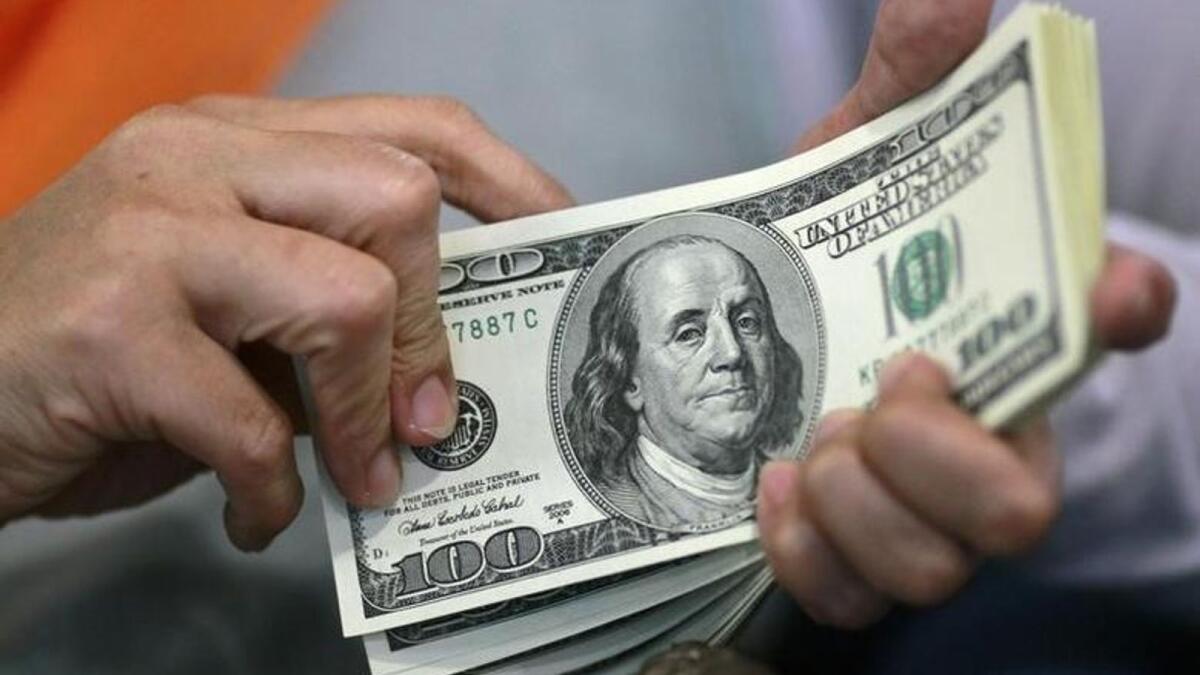Before we evaluate the title further, it is important to set the context on the topic, the US dollar and draw reference from the past. The status of US dollar as a reserve currency was cemented back in 1944 in the aftermath of the World War II during the Bretton Woods Conference. Since then, the US dollar has enjoyed the legacy of being a reserve currency for the world. Not ending there, the forex world, that trades in foreign currencies, has most of the currency pairs aligned with US dollar versus the other currency.
The start of US dollar index
Then came the development in 1973, with the creation of US dollar index (called as USDX or DXY) soon after the dismantling of Bretton Woods system, that acts as a relative measure of US dollar strength against a basket of six influential currencies including euro, pound, yen, canadian dollar, swedish korner, and swiss franc kickstarting the trade at 100. This index remains quite useful even to date. The index is designed, maintained, and published by ICE (Intercontinental Exchange, Inc), with the name “US dollar index” a registered trademark.
Basket of currencies forming a part of US dollar index
Lets evaluate the fundamentals of US dollar index. It is a weighted geometric mean of the Dollar’s value relative to SIX select currencies:
• Euro (EUR), 57.6% weight in 100
• Japanese yen (JPY), 13.6% weight in 100
• Pound sterling (GBP), 11.9% weight in 100
• Canadian dollar (CAD), 9.1% weight in 100
• Swedish krona (SEK), 4.2% weight in 100
• Swiss franc (CHF), 3.6% weight in 100
While the world may not have developed then, fifty years from then, the world has transformed and markets have emerged, yet this index has just maintained status quo as if the world never emerged since 1973.
US dollar index movements
Looking at the index movements, the US dollar index movements have been swinging in a pretty wide range post 1973 when it started trading at a value of 100. Drawing reference from historic movements, the dollar index reached an all-time high of 164.72 back in February 1985 to An All-Time Low of 70.70 in March 2008. From the lows here, the dollar index has moved up to a level of 114.78 on 26.09.2022 making a higher low of 89.21 on 04.01.2021 and currently trading at 106.09 at the close of markets on 26th April 2024.
Is the rise of dollar index demonstrating strength? The answer is certainly not in affirmative considering movement of the two heavy weights in the dollar index, the euro and the japanese yen, that cover over 70 per cent of dollar index weight.
Euro/USD Currency Pair
Euro/USD pair consists of more than half of all the trading volume worldwide in the Forex Market. Historically, the Euro US Dollar Exchange Rate – Euro/USD reached an all time high of 1.87 in July of 1973. Post the launch of euro on January 1, 1999, The Euro/USD reached an all-time high of 1.6038 in July 2008 and a record low of 0.8231 in October 2000 and is currently trading at 1.0692 euro to a US dollar at the close of markets on April 26, 2024.
This wide range of movement from Euro 1.60 to a Dollar in July 2008 to Euro 0.82 in October 2020, a devaluation of almost 49% in a span of 12 years is certainly concerning and beyond imagination.
USD / JPY Currency Pair
Recent movements in Japanese Yen exchange rates highlight the fact that the peers are devaluing their currency, resulting in Dollar Strength. The Pair, USD / JPY posted its All-Time Highs of 306.84 Japanese Yen to a US Dollar back in December 1975 and moved to All-Time Lows of 75.74 Japanese Yen to a US Dollar in October 2011 during the Global Financial Crisis. From these levels of 75.74, the Japanese Yen has not looked back at its strength and continued to weaken, imploding to a highs of 158.33 at the close of markets on 26th April 2024, losing more than a 109 per cent in value in the last 12 years. In fact, in the first four months of the year 2024, Japanese Yen has devalued from a level of 140.84 Japanese Yen to a US Dollar on 1st January 2024 to 158.33 Japanese Yen to a US Dollar at the close of markets on April 26, 2024, losing more than 12.4 per cent. This implosion in currency rate of Japanese yen is a sign of worry for the financial world, but for Bank of Japan, considering that Japan is the world’s fourth largest economy and Bank of Japan does not seem to intervene. In the process, Investors are borrowing yen at cheaper rates and investing in high yielding currencies (buying Dollar lead interest bearing instruments) to ride this devaluation wave, and profit from potential interest rate difference, it seems.
Strange, DXY composition never changed in 50 years despite growing economies
Since inception in 1973 till date, the weight of each of the currencies in the basket has never changed which is extremely demeaning to the other economies globally, despite their rising GDP or better performance. The recent GDP forecast released by International Monetary Fund is a clear indication that there is abundant growth and growth potential in Emerging Markets and Developing Economies worldwide while the Developed Economies grapple to maintain dismal growth, battling rising inflation and many other pressing issues. It seems that the Developed Economies have completely ignored The Emerging Economies. It is a matter of time that the world moves away from these defined norms and recreate new trends and standards.
Elevated and rising debt levels, a sign of financial misprudence
As per the recent publication issued by International Monetary Fund, global public debt edged up to 93 per cent of GDP in 2023 and remained 9 percentage points above the pre-pandemic level. The increase was led by the United States and China, the world’s two largest economies.
Dhaval Jasani, founder and CEO of ZTI Global
As at the end of 2023, Global GDP forecast was estimated at US Dollar 105 Trillion while world debt exceeded an estimated figure of US Dollar 307 Trillion, almost 3 times the amount of GDP and world debt (that includes all sectors, public, private, Government debt) is expected to rise at a much rapid pace, thanks to the Central banks and the soaring Sovereign debt while nations continue to borrow constantly over and above their GDP levels. It is imperative to draw reference of rising US Sovereign Debt Levels, with current debt levels at US Dollar 34.7 Trillion.
A calculation for reference, “If an individual spent US Dollar 100 every second of every day, it would take the individual 717.6 years to equal $ 6.2 trillion of spending, the US government has spent the past 12 months”. A counter calculation, this level of spending equates to spending almost US Dollar 50 per person in the US every day (considering US population of 340 million), majority of spending being financed from borrowing, that raises fiscal deficit. Borrowing at this pace is certainly the opposite of financial prudence, interpreted as Financial MISprudence. Sadly, the so-called rating agencies, assuming themselves to be self-proclaimed standard setters, have completely ignored these abysmal financial ratios and divergent financial math behind these elevated debt levels while maintaining their sovereign rating.
Given the lion’s share of US dollar in global trade, financial markets and currency trade, the irony is that, if US economy sneezes, the world with be gripped with financial flu…
World central banks no longer in sync
While the Federal Reserve in the US has maintained a higher interest rate in light of rising inflation, the other central banks in the world are gradually moving out of sync with the US in view of their own economic situation. The European Central Bank introduced negative interest rates back in 2014 to counter deflationary pressure and Bank of Japan followed these footsteps in 2016. Following the footsteps of Federal Reserve, European Central Bank raised interest rates from July 2022, introducing 10 rate hikes of 25 basis points from July 2022 to October 2023. Despite this turbulence globally, Bank of Japan maintained negative interest rate policy until recently, when Bank of Japan ended negative interest rate regime at its recent meeting on 2nd April 2024, being the last central bank to end negative interest rate policy. At this stage, the Federal Reserve continues to maintain higher interest rate and the financial markets have now priced in only one interest rate cut of 25 basis points before the end of the year 2024, a drastic change from four to five interest rate cuts of 25 basis points each priced in financial markets as envisaged in December 2023, meaning higher for longer interest rate above five per cent for US Dollar. The US may have to maintain elevated interest rates for a longer period of time, to attract buyers for its treasuries, sacrificing pain caused due to high interest burden. Ultimately, the Federal Reserve has unlimited tools at their disposal. In contrast, many central banks globally have decoupled itself from Federal Reserve and raised interest rates off late while Federal Reserve has been envisaging rate cuts.
Countries distancing from US dollars
The developments geopolitically are certainly concerning, and countries are distancing itself from the developed economies with the intent to safeguard their own sovereign interest. The US dollar is currently witnessing a paradigm shift from its reserve currency status. Here comes a time when Countries are opting to move away from US dollar and trade in their own currencies or alternate currencies. To the extent that, Venezuela has opted to move away from US dollar for its oil trade. Russia and China have also distanced itself from US dollar for its bilateral trade. The pace of dedollarisation is rapidly rising as countries move away from US Dollar.
China offloading US Treasuries, stockpiling metals
At one point in time, China was holding US Treasuries exceeding $1.3 trillion in 2013 and the current outstanding US Treasuries held by China has dropped to $775 billion, as at February 29, 2024, meaning, China has opted to reduce US dollar dependency as well as exposure to the reserve currency and instead raised its gold reserves, buying gold at market prices using its US dollar reserves. Official gold reserves in China have now risen for 16 consecutive months with the addition of 12 tonnes of gold in February 2024 that pushed their total gold reserves to 2,257 tonnes equating to 4.3 per cent of the country’s foreign exchange reserves. Apart from Gold, China has been buying metals and commodities in plenty post-Covid, strengthening its strategic reserves of commodities, using their US dollar reserves.
Gold price movements defying rising dollar index
The price movement curve between gold and US dollar index has decoupled off late, compared to the notion earlier that Gold prices drop when dollar index rises. Spot Gold prices have risen from $2,064 per ounce on January 1, 2024 to $2,338 per ounce on 26th April 2024, a rise of $274 or 13 per cent per ounce as against US dollar index that has moved from 101.41 on January 2, 2024 to 106.10 on April 26, 2024, a rise of 4.6 per cent. This is a clear sign of a weaker US dollar, in comparison to price of the precious metal.
At a country level, gold reserves globally have increased from a level of 29,963 tonnes in 2008 to 35,976 tonnes at the end of 2023 and world central banks continue to pile up gold reserves, even with elevated prices.
Conclusion
Whilst past performance is not a guarantee to future performance, the numbers and price movements in currency sphere depict a gloomy future ahead. Currency is a part and parcel of our day-to-day lives. The US dollar index may be rising against weaker peers considering synergised movement of the trio — US dollars, euro and Japanese yen. However, rising prices of precious metals is defying this strength and the other currencies have not equally weakened in comparison to US dollar. The gargantuan levels of debt, weaker peers of US dollars and the geopolitical developments globally make it very clear, Smooth sailing is history and the journey ahead is certainly going to be rough and turbulent. For now, it seems that the shine in precious metals will outpace the shine/strength in US dollars.
The writer is founder and CEO of ZTI Global.
Read the full article here










